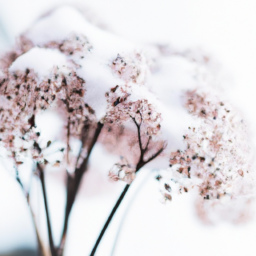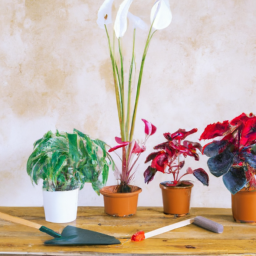
Spring Care Tips for Indoor Plants: How to Prepare and Maintain Your Plants
Introduction
Spring is a wonderful time for indoor plants as they start to come out of their winter dormancy and prepare for new growth. As a plant enthusiast, it’s important to provide the right care and attention to ensure your indoor plants thrive during this season. In this guide, we will walk you through step by step on how to prepare and maintain your indoor plants during spring.
1. Assess Your Plants
The first step in spring plant care is to assess the condition of your indoor plants. Look for any signs of stress, such as yellowing leaves, wilting, or pests. Remove any dead or damaged leaves and inspect the soil for moisture level and potential pests. This will give you a good starting point to understand the needs of your plants.
Next, consider the type of plants you have and their specific requirements. Some plants might need repotting or pruning during this time, while others may require fertilization. Understanding the individual needs of your plants will help you provide the best care.
Lastly, make sure to check the lighting conditions in your home. As the days get longer and brighter during spring, some plants may need to be moved closer to windows or areas with more sunlight.
2. Repotting and Pruning
Spring is an ideal time to repot your indoor plants if they have outgrown their current pots. Choose a pot that is slightly larger than the current one, ensuring it has drainage holes to prevent waterlogging. Use a well-draining potting mix, and gently remove the plant from its current pot, being careful not to damage the roots. Place the plant in the new pot, adding fresh soil around it, and gently firm it in place.
Pruning is also essential during spring to encourage healthy growth. Remove any dead or yellowing leaves, as well as any leggy or overgrown branches. Pruning helps redirect the plant’s energy to new growth and promotes a bushier and more compact shape.
Remember to use clean and sharp pruning tools to minimize damage and prevent the spread of diseases. You can also propagate any healthy cuttings to expand your indoor plant collection.
3. Watering and Fertilizing
Proper watering is crucial for indoor plants, especially during the spring season. Check the moisture level of the soil regularly and water your plants when the top inch of soil feels dry. Avoid overwatering, as it can lead to root rot and other issues.
When watering, make sure to thoroughly saturate the soil until water drains out from the bottom of the pot. This ensures that the entire root system receives moisture. Discard any excess water in the saucer to prevent waterlogging.
In terms of fertilizing, spring is a great time to provide your indoor plants with a boost of nutrients. Choose a balanced, water-soluble fertilizer and follow the instructions on the packaging. Fertilize your plants every two to four weeks during the growing season to promote healthy foliage and blooms.
4. Pest Control
Springtime can bring an increase in pest activity, so it’s important to stay vigilant and address any infestations promptly. Common indoor plant pests include aphids, spider mites, and mealybugs. Inspect your plants regularly for signs of pests, such as webs, sticky residue, or distorted leaves.
If you notice any pests, isolate the affected plant to prevent the infestation from spreading. Depending on the severity of the infestation, you can use natural remedies like neem oil or insecticidal soap to control the pests. Follow the instructions carefully and repeat the treatment if necessary.
Remember to also maintain good hygiene by regularly cleaning the leaves of your indoor plants. Dust and debris can attract pests and hinder photosynthesis.
Conclusion
By following these spring care tips for indoor plants, you can ensure that your plants receive the necessary care and attention they need to thrive during this season. Assess your plants, repot and prune as needed, provide proper watering and fertilization, and stay on top of pest control. With a little effort, your indoor plants will reward you with lush foliage and vibrant blooms throughout the springtime.
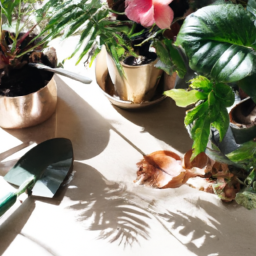
Summer Plant Care: Keeping Your Indoor Plants Healthy and Thriving in the Heat
Introduction
As summer approaches, it’s important to adjust your indoor plant care routine to ensure your plants stay healthy and vibrant in the heat. The rising temperatures and increased sunlight can pose challenges for indoor plants, but with a few simple steps, you can help them thrive throughout the summer months. In this guide, we will provide you with expert tips and advice on how to care for your indoor plants during the summer season.
1. Adjusting Light and Temperature
During summer, the intensity of sunlight increases, so it’s crucial to monitor the light exposure your indoor plants receive. Place your plants away from direct sunlight to prevent leaf burn and consider using sheer curtains or blinds to filter the light. Additionally, be mindful of the temperature in your home as it can rise significantly during hot summer days. Keep your indoor plants away from air conditioning vents or drafty areas to avoid temperature fluctuations that can stress the plants.
It’s also important to note that some indoor plants may benefit from spending time outdoors during the summer. If you have plants that thrive in partial shade, you can consider moving them to a shaded patio or balcony for a few hours each day. However, ensure they are protected from strong winds and extreme heat.
Remember, each plant has its own light and temperature preferences, so it’s essential to research the specific needs of your indoor plants and adjust accordingly.
2. Watering and Humidity
Proper watering is crucial for indoor plants, especially during the summer when the heat can cause soil to dry out more quickly. Check the moisture levels of your plants’ soil regularly and water them when the top inch feels dry. However, avoid overwatering as it can lead to root rot and other issues. Use your finger or a moisture meter to ensure you are providing adequate water.
In addition to watering, maintaining proper humidity levels is essential for indoor plants to thrive during the summer. As the air tends to be drier, especially when using air conditioning, consider using a humidifier or placing a tray filled with water near your plants to increase humidity. Misting the leaves can also provide a temporary boost of moisture.
Remember that different plants have varying water and humidity requirements, so it’s important to research the specific needs of your indoor plants and adjust your care routine accordingly.
3. Pruning and Fertilizing
Summer is an ideal time to give your indoor plants a little extra care by pruning and fertilizing them. Pruning helps promote healthy growth and removes any dead or damaged leaves. Trim back any leggy or overgrown branches to encourage bushier growth. Additionally, remove any yellowing or brown leaves to maintain the overall appearance of your plants.
When it comes to fertilizing, use a balanced, water-soluble fertilizer specifically formulated for indoor plants. Follow the instructions on the packaging to determine the appropriate frequency and dosage. However, be cautious not to over-fertilize, as it can lead to nutrient burn and damage the roots. Always dilute the fertilizer as instructed and apply it during the plants’ active growing period.
Remember to research the specific pruning and fertilizing requirements of your indoor plants, as different species may have unique needs.
Conclusion
With the right care and attention, your indoor plants can thrive and stay healthy throughout the summer season. Adjusting light and temperature, proper watering and humidity control, as well as regular pruning and fertilizing, are key factors to consider when caring for your indoor plants during the summer. By following these expert tips and guidelines, you can enjoy a lush and vibrant indoor garden even in the hottest months of the year.
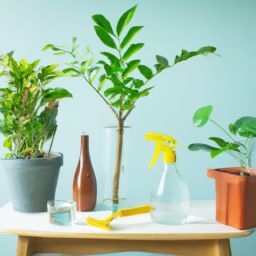
Indoor Plant Care by Season: Tips for Every Time of Year
3. Fall Season Plant Care: Essential Tips for Transitioning Your Indoor Plants Indoors
As the fall season approaches, it’s time to start thinking about transitioning your indoor plants back inside. The cooler temperatures and shorter daylight hours can have an impact on your plants, so it’s important to make some adjustments to ensure their health and well-being. In this guide, we will provide you with essential tips for successfully transitioning your indoor plants indoors during the fall season.
1. Assess Your Plants’ Needs
The first step in transitioning your indoor plants indoors is to assess their individual needs. Take a close look at each plant and determine if any specific care is required. Some plants may need to be repotted, while others may require pruning or fertilizing. Understanding the specific needs of each plant will help you provide the best care during the transition.
Additionally, consider the lighting requirements of your plants. As the days get shorter, the amount of natural light available indoors decreases. You may need to supplement with artificial lighting or rearrange your plants to ensure they receive adequate light.
Lastly, check for any signs of pests or diseases. Fall is a common time for pests to infest indoor plants, so it’s important to address any issues before bringing your plants back inside. Treat any pests or diseases accordingly to prevent further damage.
2. Gradually Adjust Light and Temperature
When transitioning your indoor plants indoors, it’s crucial to gradually adjust the light and temperature conditions. Sudden changes in light and temperature can shock and stress your plants, leading to wilting or even death. To avoid this, follow these steps:
First, start by gradually reducing the amount of light your plants receive. If your plants have been outside, bring them into a shaded area for a few days before moving them indoors. This will help them acclimate to lower light conditions.
Next, gradually adjust the temperature. Indoors, the temperature is typically warmer than outdoors, so it’s important to gradually increase the temperature around your plants. Start by placing them in a slightly warmer area, such as near a heater or in a room with higher ambient temperature. Slowly increase the temperature over a few days to allow your plants to adjust.
By gradually adjusting the light and temperature, you can minimize stress and help your plants transition smoothly indoors.
3. Maintain Proper Watering and Humidity
During the fall season, the humidity levels tend to drop, both indoors and outdoors. This can have a drying effect on your indoor plants. To maintain proper watering and humidity levels, follow these tips:
First, monitor the moisture levels of your plants’ soil. Stick your finger about an inch into the soil to check for dryness. If the soil feels dry, it’s time to water. However, be cautious not to overwater, as this can lead to root rot. Allow the soil to dry out slightly between waterings.
Second, consider using a humidifier or placing a tray of water near your plants to increase humidity levels. This will help prevent your plants from drying out and keep them thriving throughout the fall season.
Lastly, remember to adjust your watering schedule according to the changing light and temperature conditions. As the days get shorter and cooler, your plants will require less water. Adapt your watering routine accordingly to avoid overwatering.
By maintaining proper watering and humidity levels, you can ensure the health and vitality of your indoor plants during the fall season.
Transitioning your indoor plants indoors during the fall season requires careful attention to their individual needs, gradual adjustment of light and temperature conditions, and proper watering and humidity maintenance. By following these essential tips, you can help your plants thrive and continue to bring beauty and greenery into your home throughout the fall and beyond.
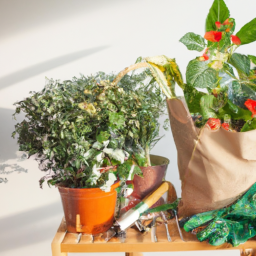
Winter Plant Care: Protecting Your Indoor Plants from Cold and Dry Conditions
Winter can be a challenging time for indoor plants as the cold and dry conditions can affect their health and growth. However, with proper care and attention, you can ensure that your indoor plants thrive even during the winter months. In this guide, we will provide you with essential tips and techniques to protect your indoor plants from the harsh winter conditions.
1. Adjusting Temperature and Humidity
During winter, it is crucial to maintain the right temperature and humidity levels for your indoor plants. Most indoor plants prefer temperatures between 60-75°F (15-24°C) during the day and slightly cooler temperatures at night. Avoid placing your plants near drafts or heat sources such as radiators, as sudden temperature fluctuations can harm them.
Additionally, the dry air that comes with winter heating can be detrimental to indoor plants. To increase humidity levels, you can use a humidifier or place a tray filled with water near your plants. Misting the leaves with water can also help to maintain the required humidity. However, be cautious not to overwater your plants as excessive moisture can lead to root rot.
Monitoring the temperature and humidity levels regularly will ensure that your indoor plants remain comfortable and healthy throughout the winter season.
2. Adjusting Light Levels
During winter, the days become shorter, and natural light intensity decreases. This can affect the growth and development of your indoor plants. To compensate for the reduced light, you can provide supplementary artificial lighting using fluorescent or LED grow lights.
Position the grow lights approximately 6-12 inches above your plants, ensuring that they receive light for 12-14 hours per day. This will help mimic the natural daylight conditions and promote healthy growth. Keep in mind that different plants have varying light requirements, so it’s essential to research the specific needs of your indoor plants.
Regularly dusting the leaves of your plants will also help maximize light absorption, as dust particles can block sunlight. Wiping the leaves gently with a damp cloth once a week will keep them clean and allow for better photosynthesis.
3. Adjusting Watering and Fertilizing
Watering and fertilizing practices need to be adjusted during the winter months as the growth rate of indoor plants slows down. Overwatering can lead to root rot, so it’s crucial to allow the top inch of soil to dry out before watering again. Check the moisture level by inserting your finger into the soil; if it feels dry, it’s time to water your plants.
Reduce the frequency of fertilization during winter as plants require fewer nutrients. Use a diluted, balanced fertilizer once every 6-8 weeks or follow the specific recommendations for your plant species. Remember to always read the instructions on the fertilizer packaging to avoid overfeeding your plants.
It’s also essential to use room temperature water for watering your indoor plants. Cold water can shock the roots and cause stress to your plants. Allow the water to sit for a few hours before using it to water your plants, ensuring it reaches room temperature.
Conclusion
By following these tips, you can successfully protect your indoor plants from the cold and dry conditions of winter. Adjusting temperature and humidity, providing adequate light, and adjusting watering and fertilizing practices are all essential factors in ensuring your plants thrive during the winter months. Remember to monitor your plants regularly and make any necessary adjustments to their care. With proper attention and care, your indoor plants will continue to bring life and beauty to your home throughout the winter season.
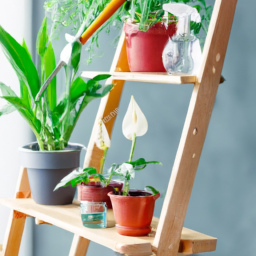
Year-Round Indoor Plant Care: General Tips and Techniques for Every Season
Indoor plants not only add beauty and freshness to our homes but also provide numerous health benefits. To ensure their well-being, it’s important to understand the specific care requirements for each season. By tailoring your plant care routine to the changing seasons, you can help your indoor plants thrive all year round. Here are some general tips and techniques to keep in mind:
1. Light and Temperature
Light and temperature play crucial roles in the growth and development of indoor plants. During the winter months, when the days are shorter and sunlight is limited, it’s essential to provide adequate lighting for your plants. Place them near windows that receive the most sunlight or consider using artificial grow lights to supplement natural light.
On the other hand, during the summer, when the days are longer and the sun is stronger, it’s important to protect your indoor plants from direct sunlight. Move them away from windows that receive intense afternoon sun to prevent leaf burn. Additionally, be mindful of the temperature fluctuations in your home. Most indoor plants prefer temperatures between 65-75°F (18-24°C) during the day and slightly cooler temperatures at night.
Regardless of the season, it’s crucial to monitor your indoor plants for any signs of stress caused by inadequate light or extreme temperatures. Adjust their placement accordingly to ensure they receive the right amount of light and remain within their preferred temperature range.
2. Watering and Humidity
Proper watering is a key aspect of indoor plant care throughout the year. While it’s essential to water your plants regularly, it’s equally important not to overwater them, as it can lead to root rot and other issues. The watering frequency and amount will vary depending on the specific plant species, its size, the potting mix, and the season.
During the winter, when indoor heating can cause dry air, it’s crucial to maintain adequate humidity levels for your plants. You can increase humidity by placing a tray filled with water near your plants or by using a humidifier. Misting the leaves of your plants occasionally can also help increase humidity around them.
In contrast, during the summer, when humidity levels are generally higher, you may need to adjust your watering routine accordingly. Monitor the moisture levels in the soil and adjust the frequency and amount of water accordingly to prevent waterlogging.
Remember to always water your plants thoroughly, allowing excess water to drain out of the pot. This helps prevent the buildup of salts and ensures proper hydration for your plants.
3. Fertilizing and Pruning
Fertilizing and pruning are important tasks to promote healthy growth and maintain the appearance of your indoor plants. However, the frequency and approach may vary depending on the season.
During the growing season, which is typically spring and summer, indoor plants benefit from regular fertilization. Choose a balanced, water-soluble fertilizer and follow the instructions on the packaging for application rates. Fertilize your plants every 2-4 weeks to provide them with the necessary nutrients for robust growth.
Pruning is also best done during the growing season. Remove any dead or yellowing leaves, and trim back leggy stems to encourage bushier growth. Regular pruning helps maintain the overall shape and appearance of your plants.
During the winter months, when most indoor plants enter a period of dormancy, reduce or stop fertilization altogether. Pruning should also be minimal during this time, as plants tend to grow more slowly. However, it’s still essential to remove any dead or diseased foliage to prevent the spread of pests or diseases.
By adjusting your fertilizing and pruning routines according to the seasons, you can ensure that your indoor plants receive the right care at the right time.
With these general tips and techniques for year-round indoor plant care, you can provide your plants with the optimal conditions they need to thrive. Remember to observe your plants closely and make adjustments as necessary to meet their specific requirements. By doing so, you’ll enjoy the beauty and benefits of healthy, vibrant indoor plants in every season.
Frequently Asked Questions (FAQ)
1. How do I care for indoor plants during the winter?
During the winter, it is important to provide your indoor plants with adequate light, as the days are shorter. Keep them away from drafty areas and ensure the temperature is suitable for the specific plant. Watering needs may decrease, so be mindful not to overwater.
2. What should I do to care for my indoor plants during spring?
In spring, plants tend to experience new growth. Increase watering frequency and provide them with sufficient sunlight. Consider repotting if necessary and fertilize regularly to support healthy growth.
3. How can I care for indoor plants during the hot summer months?
During summer, it’s crucial to protect your indoor plants from excessive heat and direct sunlight. Provide shade if needed and increase watering to compensate for evaporation. Monitor humidity levels and consider misting the leaves to provide extra moisture.
4. What are some tips for caring for indoor plants during the fall?
In fall, adjust your watering schedule to accommodate the changing weather conditions. Decrease the amount of water given to your plants as they may require less. Keep an eye out for pests that may become more active during this time.
5. Can I use regular tap water to water my indoor plants?
Using tap water is generally fine for most indoor plants. However, some plants may be sensitive to the chemicals present in tap water. If you notice any adverse effects, consider using filtered or distilled water instead.
6. How often should I fertilize my indoor plants?
Fertilizing frequency depends on the type of plant and the specific fertilizer being used. Generally, it is recommended to fertilize indoor plants once a month during the growing season (spring and summer) and reduce or stop fertilizing during the dormant period (fall and winter).
7. Should I mist the leaves of my indoor plants?
Misting can be beneficial for certain plants, especially those that prefer higher humidity levels. However, not all plants require misting, and some may even be sensitive to it. Research the specific needs of your plants to determine if misting is necessary.
8. How can I prevent common indoor plant pests?
To prevent common pests, regularly inspect your plants for signs of infestation. Keep your plants clean by wiping the leaves with a damp cloth and remove any dead or decaying plant material. Quarantine new plants before introducing them to your existing collection.
9. Is it necessary to rotate indoor plants?
Rotating indoor plants is beneficial as it ensures even growth and prevents plants from leaning towards a light source. Rotate your plants every few weeks to promote balanced development.
10. What should I do if my indoor plant is not thriving?
If your indoor plant is struggling, assess its care routine. Check for signs of overwatering or underwatering, ensure it is receiving adequate light, and inspect for pests or diseases. Adjust the care accordingly and consider seeking advice from plant experts or local nurseries if needed.

James Wong is a renowned ethnobotanist, plant scientist, and local television presenter. With a passion for demystifying plant science, he is known for translating complex botanical concepts into practical advice for everyday plant enthusiasts. James’s expertise spans from traditional gardening to cutting-edge plant technologies, making his insights accessible and informative.

